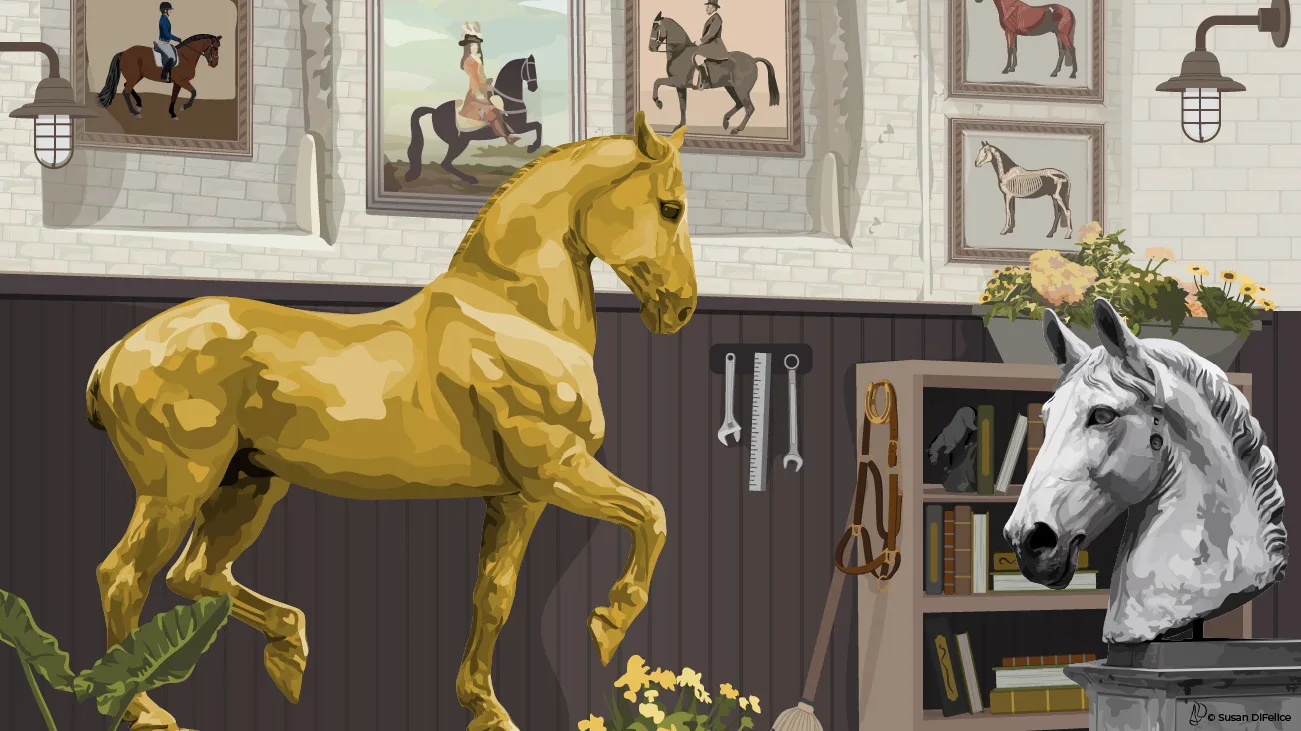It can be hard to describe dressage: Is it a sport? An art? Or kind of a combo—maybe a “spart”?
Training a horse from the very beginning all the way to the Grand Prix is most definitely hard physical work, like a sport. And bringing a horse from knowing nothing to being able to offer these difficult and beautiful movements is absolutely an art. I often describe it as working to create a “living sculpture.” The training sculpts the horse’s body into something even more beautiful than what nature gave him. The upper-level movements—piaffe, passage, pirouettes—are the moments so many great artists have chosen to sculpt throughout history, because they are powerful and awe-inspiring. Around the world, emperors, kings and queens are depicted riding these upper-level movements in statues that grace town squares and hilltops.
Much like an artist would never say their sculpture is perfect and truly finished, a trainer never believes the training is perfect or finished. Each day with the horse is a chance to improve small things and make the sculpture more beautiful. Can we get the horse to use the hindquarters even more? Lighten the forehand even more? Can the contact get even softer? Can the back relax and swing just a bit more? All of these concepts help to sculpt the horse’s body into something stronger, more beautiful, more powerful.

Michelangelo is supposed to have said, “Every block of stone has a statue inside it, and it is the task of the sculptor to discover it.” I feel that training horses is very similar.
It’s not that every horse is dying to become a competitive Grand Prix horse, but I do believe every horse has a stronger, more beautiful version of himself that can be sculpted by the trainer over time.
One of my favorite things is to see before and after photos of horses who have been in training for many years. Sometimes the differences are so profound that it’s hard to believe it’s even the same horse.
ADVERTISEMENT
I have seen horses go from looking downhill to appearing as if they were built uphill. Surely their skeletal structure did not change after they were done growing? But the topline and all the musculature has changed so much, and the horse’s posture changed so much, that they look like they have different—and better—conformation after proper training. I’ve also seen horses slightly change color, which again seems impossible. But a horse who was underweight, not in good shape or not well groomed can truly bloom over time. Not only do the muscles get stronger, the coat changes when the circulation is better, and the shine that comes from within on a healthy and proud horse sure does seem like a magical thing.
Try to look at your horse and see the living sculpture that he or she can become. Think of yourself as an artist, helping to bring that sculpture into being each day with your training.
Eliza Sydnor Romm is an FEI rider and trainer from Chapel Hill, North Carolina. She is a USDF Certified Instructor and sought-after trainer and clinician. She teaches horses and riders of all levels, from starting under saddle to Grand Prix.
Susan DiFelice, a lifelong rider and award-winning equestrian illustrator, created Allpony, an educational website serving a global community with courses, games and printables on horsemanship. Her passion lies in fostering creative partnerships and producing illustrations for professionals and brands seeking to make an impact in the equestrian world.














